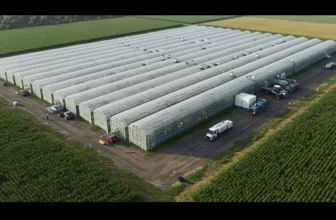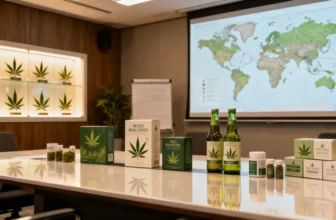New York’s legal cannabis market is expanding at a faster pace than ever before. Retailers across the state reported $214.4 million in total cannabis sales in August, a sharp increase from $161.6 million in July and $153.2 million in June, according to the latest data from the Office of Cannabis Management (OCM).
The August results include both adult-use and medical marijuana transactions and represent a significant milestone for the Empire State’s growing cannabis economy. Industry analysts describe the month’s results as reflecting increasing consumer confidence, expanding retail access, and improved product diversity across licensed dispensaries.
A Booming Market on Track for $3 Billion
With this surge, New York is now projected to surpass $1.3 billion in total sales for 2025, more than half of the state’s cumulative $2.3 billion in cannabis revenue since the first adult-use stores opened in 2022.
The state officially crossed the $2 billion mark earlier this summer, but regulators now say the market is on track to hit $3 billion in total sales by the end of 2025 if the current momentum continues.
For investors, these numbers underscore how quickly New York’s cannabis industry is maturing, even amid regulatory hurdles and licensing delays that slowed the rollout in its early stages.
Compared with other U.S. markets, New York’s acceleration has been exceptional. While mature states like Colorado and California have seen monthly sales plateau or decline, New York’s upward trajectory suggests consumer adoption is still in an early, explosive phase.
Rising Demand, Shrinking Supply
Despite the record sales, officials are already flagging concerns about future supply shortages. OCM’s Deputy Director of Analytics, Kevin Brennan, noted that while the state has licensed enough cultivation for 2027, only a small portion of that capacity is currently operational.
The agency estimates that as much as 40% of next year’s product demand could go unmet, given that many license holders have yet to fully utilize their approved growing facilities.
This mismatch between licensing and production readiness poses both challenges and opportunities for investors and operators. For existing cultivators and processors, a supply crunch could temporarily lift wholesale prices and create new margins. For retailers, however, limited product availability may squeeze inventory diversity and slow customer retention.
Industry observers suggest that 2026 could be a transitional year, testing the resilience of New York’s supply chain and regulatory systems as demand continues to grow faster than infrastructure can keep pace.
Expansion Through New Licenses
In the same meeting, the Cannabis Control Board (CCB) announced 33 new business licenses, expanding the state’s commercial ecosystem. The approvals include:
- 11 cultivators
- 2 distributors
- 6 processors
- 8 retailers
- 3 microbusinesses
- 2 conditional adult-use retail licenses
The latest batch of approvals builds on New York’s steady push to open more legal outlets and reduce reliance on the state’s still-thriving gray market. Each new license represents a step toward the state’s broader goal of establishing a diverse, community-centered cannabis industry that balances large-scale operations with small and social equity businesses.
What This Means for Investors
For investors eyeing the cannabis sector, New York remains one of the most promising markets in the U.S. The state’s combination of population density, tourism, and progressive legalization policy provides a powerful foundation for long-term growth.
Short-term, the record-breaking August results indicate robust demand across both recreational and medical categories. Retailers in major metro areas, especially New York City, have benefited from growing consumer awareness and the gradual normalization of cannabis use among adult users.
However, the projected 2026 shortfall should not be ignored. It may create volatility in pricing, supply, and licensing valuations. Companies with operational cultivation assets or vertically integrated business models are likely to outperform those still waiting for buildouts or permits.
Analysts also expect further consolidation in the coming year, as stronger operators acquire smaller licensees struggling with capital constraints or delayed regulatory approvals.
Looking Ahead
As New York’s cannabis industry heads toward 2026, the outlook remains overwhelmingly positive but complex. Sales momentum is undeniable, and consumer participation continues to grow, but the sector will need careful planning to sustain supply, pricing stability, and retail consistency.
If current projections hold, New York’s cannabis industry could soon rival California’s in total annual revenue, a remarkable outcome for a market that only launched adult-use sales a few years ago.
For now, August’s $214 million sales milestone stands as a clear signal: New York’s cannabis boom has officially arrived.





